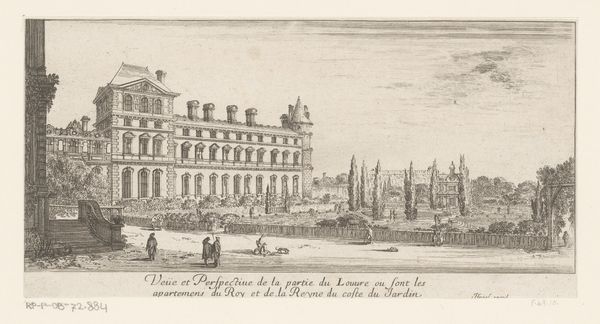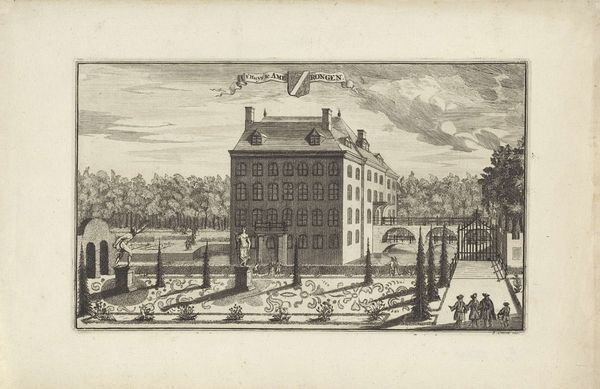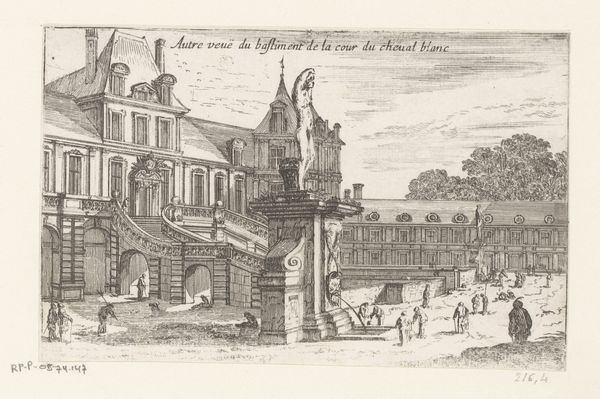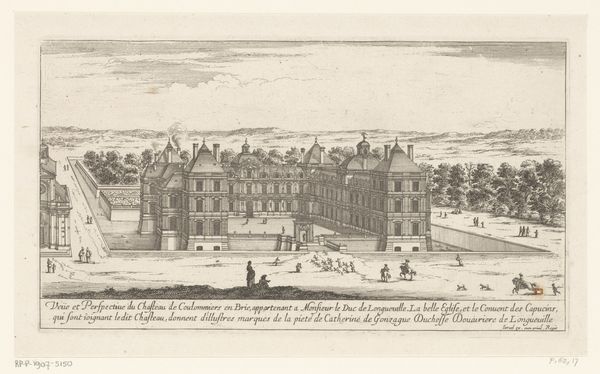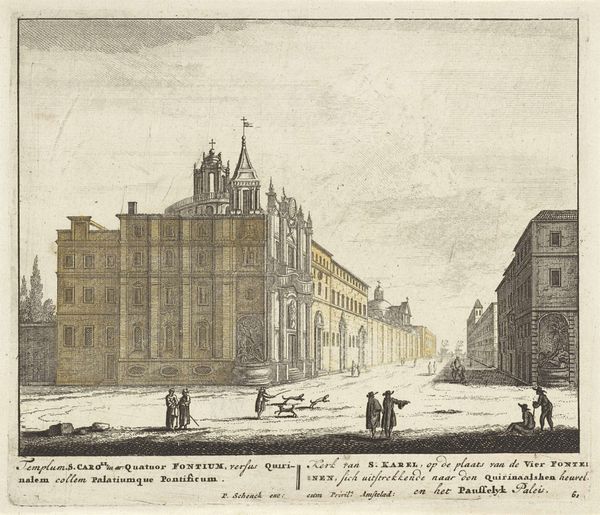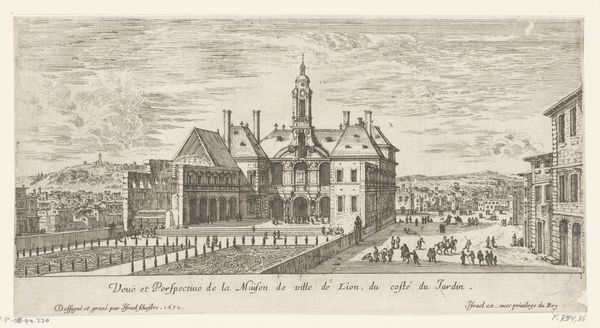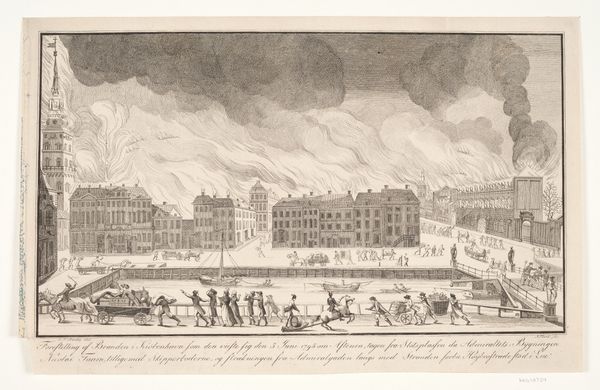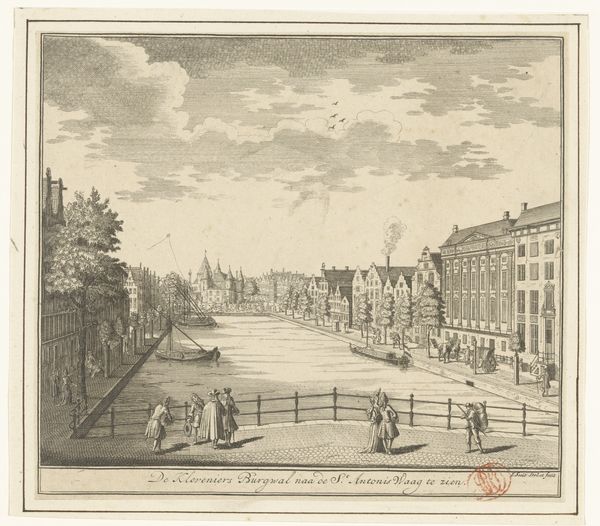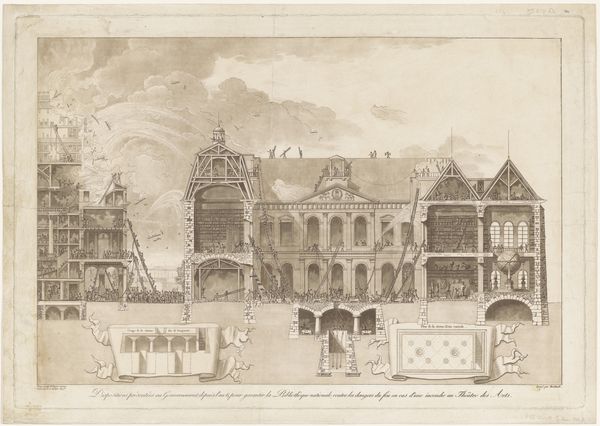
Veue de la Maison de Monsieur de Bretonuillerdans l'Isle Nostre Dame 1664
0:00
0:00
print, engraving, architecture
#
baroque
# print
#
landscape
#
cityscape
#
engraving
#
architecture
Copyright: National Gallery of Art: CC0 1.0
Curator: Oh, look at this! A little slice of 17th-century Parisian life, all captured in delicate lines. This engraving, dating back to 1664, is entitled "Veue de la Maison de Monsieur de Bretonuillier dans l'Isle Nostre Dame", made by Israel Silvestre. Editor: It feels incredibly ordered, almost rigidly so. Like a stage set, where even the people are carefully placed props. Does that make sense? Curator: Absolutely! Silvestre was known for documenting architecture and landscapes with meticulous detail, often for political purposes, to glorify the urban projects of the French monarchy. This particular image showcases the residence of Monsieur de Bretonuillier on the Île Notre-Dame. It presents his wealth but, in essence, acts like an urban planning document, making Parisian building development visible and accessible to the bourgeois class. Editor: So it's less about personal expression and more about... propaganda? I see the grandeur; the imposing house, the little figures seemingly bowing. But knowing its intention diminishes the experience a bit. What a statement about art and the politics of the day, isn't it? Even then, images were carefully curated and weaponized. Curator: To some extent, yes, though that’s a very modern reading. Silvestre operated within a system of patronage where aesthetics and ideology went hand in hand. Consider how the medium itself – engraving – allowed for the wide distribution of this image, subtly shaping public opinion about urban development under royal authority. Editor: That precision! Those meticulously placed carriages, each tree! I keep returning to how incredibly lifeless this feels. I am finding myself gravitating toward the figure simply sitting near the estate; there’s some semblance of unpolished humanness that stands out. Curator: That's perceptive! While Silvestre aims to portray an ordered, civilized vision, individual stories like that one might inevitably surface, disrupting the intended narrative. These small imperfections add a layer of complexity. Editor: Perhaps what stays with me the most is realizing that what seems like an innocuous city scene served such strategic, almost covert purpose. A potent reminder that art is never created in a vacuum, huh? Curator: Precisely. And for me, Silvestre's "Veue" is an extraordinary testimony, demonstrating that what constitutes reality is very often carefully arranged!
Comments
No comments
Be the first to comment and join the conversation on the ultimate creative platform.
